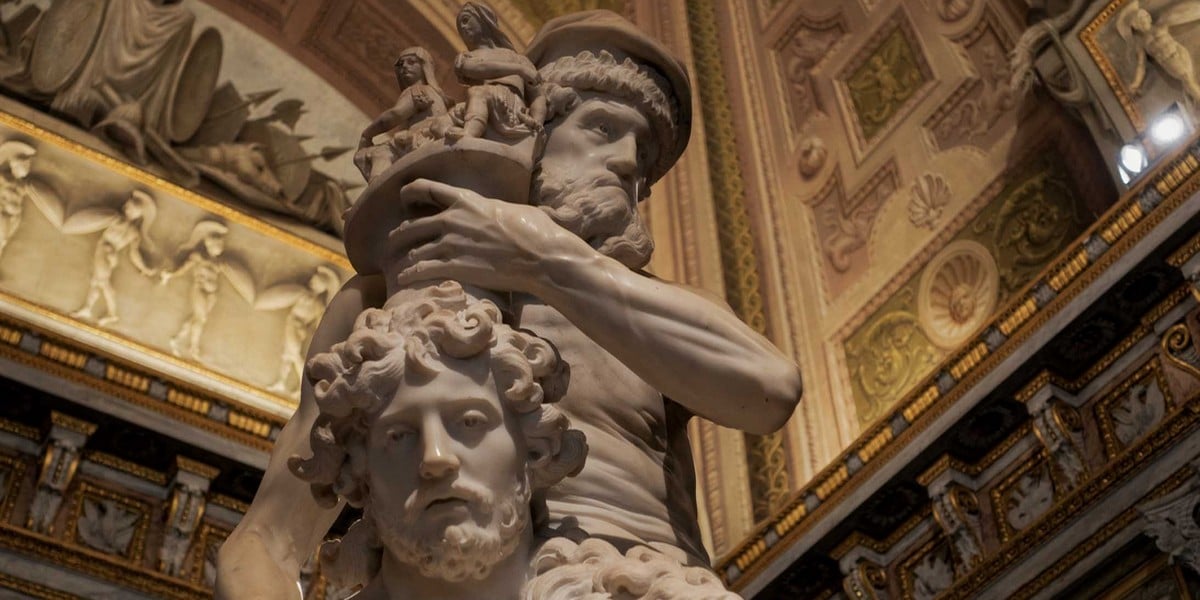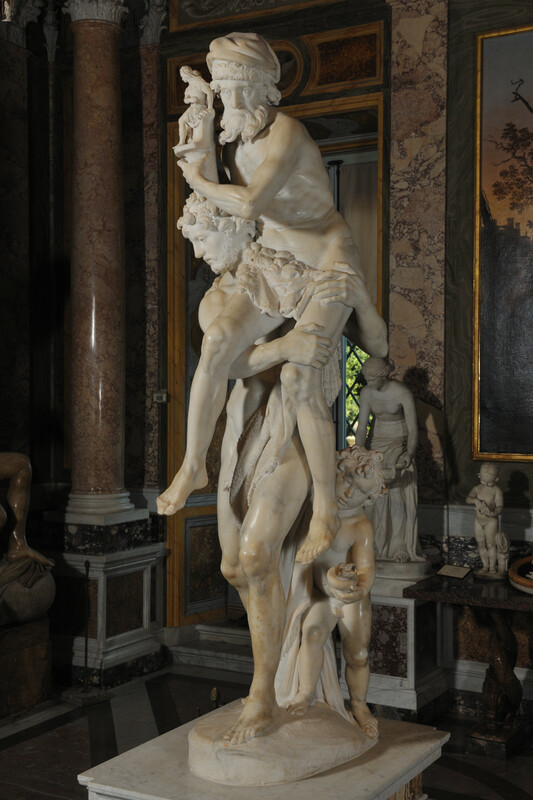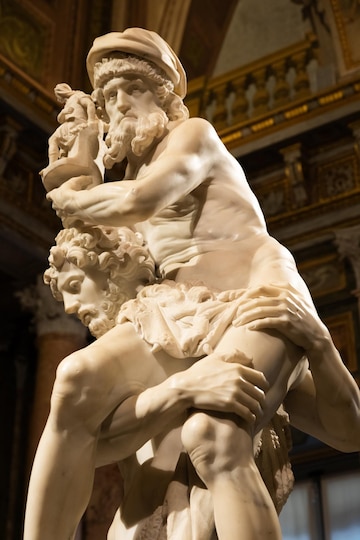Table of Contents
ToggleIntroduction
Nestled within the Borghese Gallery in Rome, Aeneas, Anchises, and Ascanius is an early masterpiece by the renowned sculptor Gian Lorenzo Bernini. Created around 1618-1619 when Bernini was in his early twenties, the sculpture illustrates a deeply moving scene from Virgil’s Aeneid. This work, commissioned by Cardinal Scipione Borghese, captures a pivotal moment in Roman mythology and showcases the remarkable skill of a young Bernini as he embarked on what would become a legendary career in Baroque sculpture.

Symbolism and Themes
The sculpture vividly portrays Aeneas carrying his elderly father, Anchises, on his shoulders as his young son, Ascanius, follows close behind. This arrangement not only tells a heroic story of survival but also symbolizes the three stages of life: youth (Ascanius), adulthood (Aeneas), and old age (Anchises). This triad represents continuity, familial loyalty, and the resilience required to forge a future amid the destruction of the past.

The Mythological and Cultural Context
In Roman mythology, Aeneas is revered as the ancestor of Romulus and Remus, the founders of Rome. By depicting Aeneas and his family escaping the fall of Troy, Bernini bridges the mythical past of Troy with the establishment of Rome. Anchises is depicted carrying the sacred household gods, symbolizing the transfer of Trojan heritage and the gods’ protection to a new civilization. This artistic representation not only evokes patriotism but also reinforces the cultural significance of Rome’s legendary origins.

Artistic Excellence of Bernini
- Youthful Genius: Created when Bernini was just around 20 years old, the sculpture demonstrates his early mastery of form, texture, and emotional depth, qualities that would later define his Baroque masterpieces.
- Technical Skill: Bernini’s ability to depict realistic expressions and intricate details, such as the folds of clothing and the tension in Aeneas’s muscles, showcases his exceptional talent.
- Emotional Impact: The faces of the three figures—Anchises’ weariness, Aeneas’ determination, and Ascanius’ youthful innocence—work together to convey a deeply emotional narrative, capturing the tension and hope of their flight from Troy.
Legacy and Importance
The commission of Aeneas, Anchises, and Ascanius by Cardinal Scipione Borghese marked a turning point in Bernini’s career, securing his status as a rising star in Rome’s artistic landscape. The sculpture set a new standard in Baroque art, paving the way for Bernini’s later achievements in Rome and beyond. As an early work, it highlights Bernini’s unique ability to bring mythological stories to life through skillful rendering and emotional resonance.
Conclusion
- Aeneas, Anchises, and Ascanius stands as a tribute to Rome’s legendary ancestry and Bernini’s burgeoning genius. This sculpture remains a celebrated piece in the Borghese Gallery, bridging history, myth, and artistry in a powerful portrayal of familial duty and resilience. Through this work, Bernini immortalizes the Trojan hero’s journey and the symbolic foundation of Rome, offering an enduring narrative of survival, continuity, and legacy.

